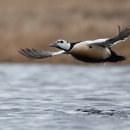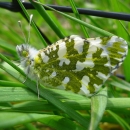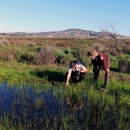What We Do
We provide leadership on behalf of the American people in recovering and conserving our nation’s imperiled species.
Working in partnership with public and private landowners, our Candidate Conservation program assesses species and develops and facilitates the use of voluntary conservation tools for collaborative conservation of candidate and other species-at-risk and their habitats, so that these species do not need the protection of the Endangered Species Act (ESA).
Through our Listing and Classification program, we determine whether to add a species to the federal list of endangered and threatened wildlife and plants. Listing affords a species the full range of protections available under the ESA, including prohibitions on killing, harming or otherwise "taking" a species. In some instances, listing can be avoided by the development of candidate conservation agreements, which may remove threats facing the candidate species.
Working toward the goal of the ESA, which is the recovery of listed species to levels where federal protection is no longer necessary for survival, our Recovery program develops and implements recovery plans. These plans provide detailed and site-specific management actions for private, federal, and state cooperation in conserving listed species and their ecosystems.
Our Programs
Our Services
The ESA provides a broad and flexible framework to facilitate conservation with a variety of stakeholders. We have a number tools to help our agency work with, leverage, and expand our existing network of conservation partnerships to produce effective conservation practices and conservation strategies on the ground.
Our Projects and Research
Species Status Assessments
The U.S. Fish and Wildlife Service developed the Species Status Assessment Framework as part of the ongoing effort to improve implementation of the ESA and enhance conservation success. A species status assessment is a focused, repeatable, and rigorous assessment of a species' ability to maintain self-sustaining populations over time. This assessment is based on the best available scientific and commercial information regarding life history, biology, and consideration of current and future vulnerabilities. The result is a single document that delivers foundational science for informing all ESA decisions, including listing determinations, consultations, grant allocations, permitting, and recovery planning.

















